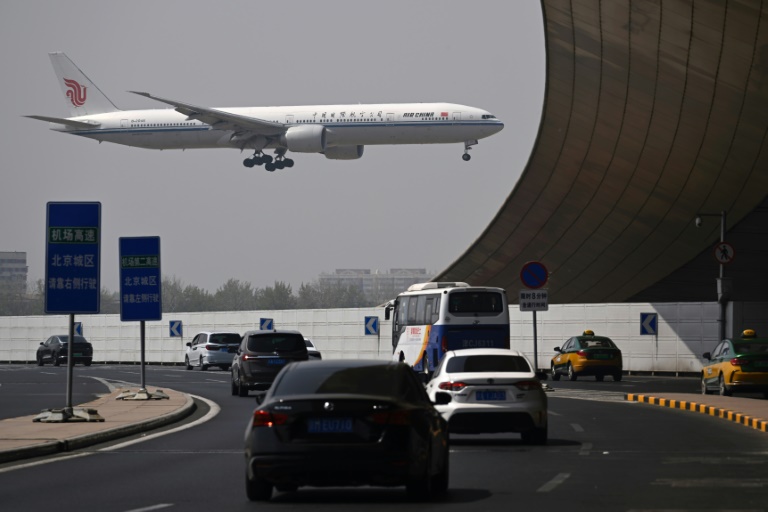SINGAPORE: With a global trade war looming, economic growth is set to slow in the coming months, but analysts are split on whether Singapore would slip into a technical recession. A technical recession refers to two consecutive quarter-on-quarter contractions in economic performance. On Monday (Apr 14), the Ministry of Trade and Industry (MTI) said the Singapore economy contracted by 0.
8 per cent in the first three months of the year on a quarter-on-quarter seasonally adjusted basis. The decline was attributed to a slowdown in manufacturing and some services sectors such as finance and insurance. HSBC said the first quarter’s contraction raises the question of whether Singapore will see a technical recession, but adding that the growth outlook is set to face more challenges.

Gross domestic product (GDP) growth is expected to be weighed down by uncertainty and shocks from the global trade war, Maybank economists said in a research note. However, a diversion of trade and financial flows and the 90-day pause in so-called reciprocal tariffs may cushion the blow for Singapore. Falling interest rates, a construction boom and more fiscal support will also help growth, they wrote.
"We are pencilling in a growth slowdown, but not a recession at this stage," said Mr Brian Lee, an economist at Maybank Investment Bank. On the other hand, OCBC chief economist Selena Ling said a technical recession is likely. If momentum continues to decelerate in the second quarter, she would not rule out a technical recession in the first half of the year.
Even if Singapore manages to avoid that, the second half of the year is "not out of the woods either", she added. "A technical recession is possible as the brunt of the initial US tariff announcements has wrecked significant havoc on financial markets in April and real economic fallout is anticipated in the coming months," Ms Ling said. MTI on Monday downgraded Singapore's 2025 GDP growth forecast to 0 per cent to 2 per cent.
GOVERNMENT SUPPORT Singapore has the resources to support its economy and the government is prepared to do so, analysts said. Ms Ling pointed to a task force set up to help businesses and workers, which was announced by Prime Minister Lawrence Wong last week. "The policy stance is one of standing ready to do more, if and when necessary," she said, adding that an off-Budget package could be introduced later this year if economic conditions weaken further.
Singapore's government has "ample dry powder" to quickly roll out more stimulus if the global economy rapidly deteriorates, said Mr Lee of Maybank. The bank estimates that the accumulated fiscal surplus over the current electoral term amounts to S$14.3 billion (US$10.
9 billion). For monetary policy, the Monetary Authority of Singapore (MAS) said it would "reduce slightly" the rate of appreciation of the Singapore dollar nominal effective exchange rate (S$NEER). That means the local currency will likely weaken or strengthen at a slower pace, which typically helps to boost exports.
"(The) easing decision suggests that the paramount priority for the MAS is to support growth in this significantly uncertain global trade with a lack of clarity regarding tariff directions," HSBC Global Research said in a report. MAS took a measured approach because it meets four times a year instead of twice, which was the case before 2024. "Higher frequency of meetings gives the MAS the flexibility to adjust its monetary settings in a timelier manner, particularly in a world lacking clarity on tariff directions," HSBC said.
It added that MAS took a "dovish" tone, suggesting that the central bank remains open to further easing of policy. Ms Ling of OCBC similarly said there is room for further monetary policy easing if economic conditions worsen. "The rhetoric is clearly dovish with reference to the output gap turning negative and the downside inflation risks," she said.
MAS lowered its core inflation forecast to 0.5 per cent to 1.5 per cent for 2025.
SINGAPORE DOLLAR OUTLOOK Despite the actions by MAS, the Singapore dollar is likely to remain relatively strong, analysts said. HSBC said the currency rebounded after the US dollar index fell, and the S$NEER rose after MAS released its monetary policy statement. “All in, we think it is difficult to have a bearish SGD trade idea at this juncture,” the bank said.
Mr Christopher Wong, an FX strategist at OCBC, said he expects the Singdollar to trade between 1.31 and 1.325 against the greenback.
Given the implication of Trump's tariffs on growth, trade and sentiments, as well as potential MAS policy easing, the Singapore dollar is likely to weaken against the US dollar for 2025. However, if the Euro and Chinese yuan recover, or the US dollar persists in weakening, then that would support the Singapore dollar, he said..
Business

Singapore economy expected to slow, but analysts split on whether technical recession is likely

Analysts say that Singapore stands ready to take action to support its economy through fiscal measures and monetary policy.














